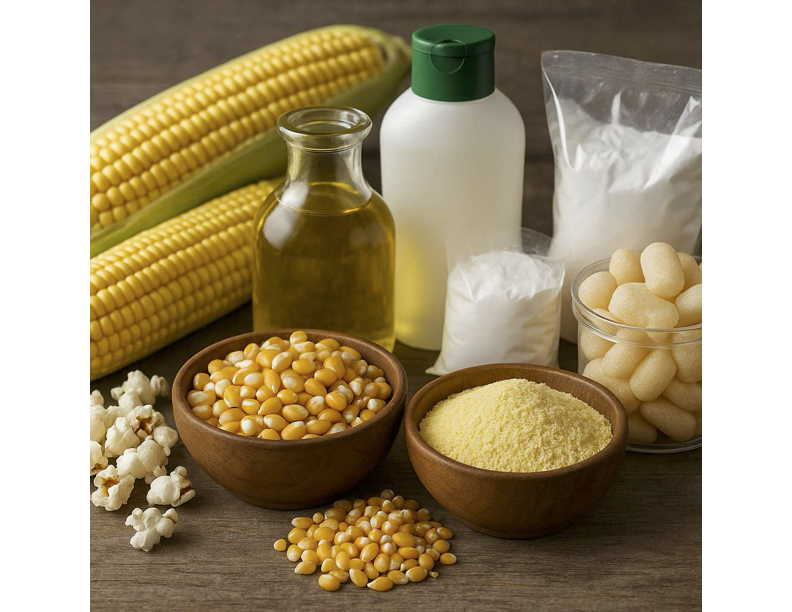Corn isn’t just something you eat at barbecues or find in a can. It’s a powerhouse crop that touches almost every part of modern life—sometimes in ways you wouldn’t expect. From fueling your car to feeding livestock to showing up in your shampoo, corn has become one of the most versatile and widely used crops in the world.
Here’s a breakdown of how corn plays a bigger role than you might think.
1. Food, of Course—but Not Just for Humans
Corn is a staple in countless diets. We eat it fresh, canned, or frozen. It’s the base for tortillas, popcorn, grits, and cornmeal. But a lot of corn doesn’t end up on your plate—it goes into feeding the animals that do.
Livestock feed is one of the biggest uses of corn. In the U.S., more than 60% of corn production is used to feed cattle, pigs, and chickens. It’s a high-energy grain that fattens livestock quickly and efficiently.
2. Corn in the Tank: Fuel and Energy
Corn powers more than people and animals—it also fuels cars.
Ethanol, a renewable biofuel made from fermented corn, is often blended with gasoline to reduce emissions and reliance on fossil fuels. In fact, about 40% of U.S. corn goes to ethanol production. It’s not perfect, but it's part of the push toward more sustainable energy sources.
3. Corn in Packaging, Plastics, and Everyday Products
Corn isn’t just edible—it’s also industrial. Polylactic acid (PLA), a biodegradable plastic made from corn starch, is used in everything from compostable cups to food containers. It's an alternative to petroleum-based plastics and breaks down more easily in the environment.
Corn starch is also used to make packing peanuts, adhesives, and paper products. Its versatility makes it a key ingredient in many manufacturing processes.
4. Hidden in Processed Foods Everywhere
Corn might be the most under-the-radar ingredient in your kitchen. High-fructose corn syrup is found in sodas, snacks, condiments, and even bread. Corn oil is used for frying and baking. Cornstarch thickens your sauces and gravies. Modified corn ingredients are used to preserve, sweeten, or bind almost anything on a grocery store shelf.
If it’s processed, chances are it contains corn.
5. Corn in Personal Care and Household Items
It doesn’t stop at food. Corn-based products show up in toothpaste, makeup, hand sanitizers, deodorants, and even painkillers. The reason? Corn-derived alcohols, starches, and acids can act as thickeners, stabilizers, and carriers.
Next time you look at the back of a shampoo bottle or cleaning spray, check for ingredients like citric acid or xanthan gum—often corn-based.
6. Corn and the Future of Sustainability
With its adaptability and abundance, corn is becoming part of the solution to reducing plastic waste and fossil fuel use. Researchers are developing more efficient ways to turn corn biomass (like stalks and husks) into biofuels and biodegradable materials.
That means corn might help us build a cleaner, more sustainable future—if used responsibly.
Bottom Line:
Corn isn’t just a crop—it’s a cornerstone. It feeds the world, fuels industries, sneaks into products we use daily, and offers promising alternatives to synthetic materials. Whether you’re biting into a taco or pumping gas, corn probably played a role in getting it to you.
It’s everywhere. And it’s not going anywhere.

